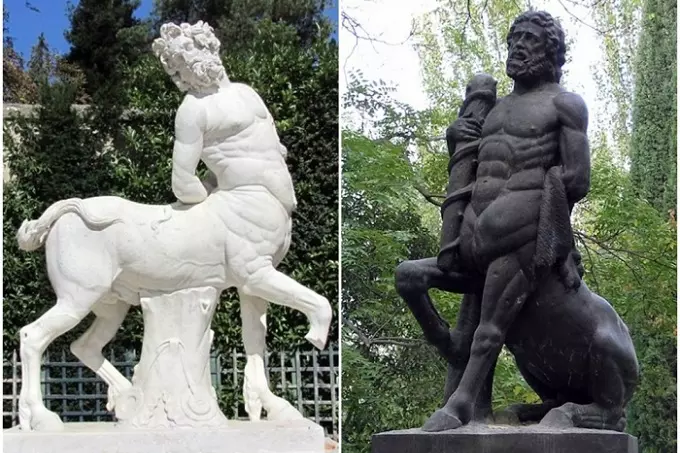Why great healer Asclepius was defeated by Zeus and why snake appears on the emblem of physicians?

Asclepius’s gift was so special that across the throat was a bone to the gods who control life and death. His healing abilities were drawn from a variety of sources throughout his life. That is why the stories about the great and powerful Asclepius are full of secrets, myths and various legends.
In the end, Zeus, alarmed by what was happening, struck Asclepius with lightning, hoping that this would prevent him from resurrecting people from the dead. What the Greek god was like, who had the gift of extraordinary healing and what his staff is like?
Early years and life path
Asclepius was the son of Apollo, the god of light, the sun, medicine and healing. Meanwhile, his mother was Princess Coronis, a Greek mortal. And this meant only one thing, that Asclepius was a demigod, his father Apollo was one of the most revered deities of Olympia, who had an extraordinary set of talents. And it is not at all surprising that Apollo passed on the talent for healing to Asclepius through a sacred lineage.
A wise and generous centaur named Chiron raised Asclepius. Under the watchful eye of a mentor, the young man mastered a number of useful skills in medicine, such as herbology, surgery, and the use of medicines. Chiron’s teachings had a profound and lasting impact on his young protégé.

Combined with the natural gift of healing, they were the perfect starting point for creating the most powerful healer in Ancient Greece. The news of this spread far and wide, and soon Asclepius acquired a huge army of followers from all over Greece.
The ancient Greeks founded the cult of Asclepius, inspired by stories about this revered healer. They founded healing temples called Asclepions. There, healers performed a series of rituals to restore people to full health. Live, non-venomous snakes roamed freely around the temple of healing, bringing their mysterious and enigmatic presence to the surroundings. This particular breed of harmless snake still exists today and is known as the Aesculapian snake.
The cult of Asclepius (Asclepius, Aesculapius) was one of the most enduring in classical antiquity. Hundreds of shrines dotted Italy, Greece, the eastern Mediterranean and northern Africa. It was believed that the cult originated in Epidaurus, from where it spread to new places thanks to the transportation of one of the sacred snakes. The snake of Asclepius is described as alert, gentle, and endowed with eternal youth by shedding its skin, hence its association with healing.
There were even rumors that, at times, Asclepius himself took on the appearance of this animal in order to save people from various kinds of epidemics and diseases. Other attributes of Asclepius were his staff and a dog lying next to him. The staff looks different from the caduceus of Hermes, the herald’s emblem.
A study of the cult of Asclepius provides a fascinating insight into the experience of sickness and disease in antiquity. Sick patients came to the temples of Asclepius to perform the rite of incubation, which meant spending the night in the temple in the hope of miraculous healing, a dream with a recipe, or a dream in which healing was encrypted in one form or another.
For the ancient Greeks, snakes were divine, mysterious and highly intelligent creatures with innate healing abilities. And Asclepius sought to learn as much as possible from them. In one legend, Asclepius killed a snake. He then watched as another snake appeared and gave the dead snake herbs to revive it. By carefully observing this interaction, he was able to discover the hidden healing properties of nature. Asclepius then used the same technique to raise a man from the dead. In another similar story, he healed a snake from its approaching death. As a sign of gratitude, the snake quietly whispered her knowledge of the art of healing into Asclepius’s ear.
In another myth, Asclepius was so powerful that he could even heal victims from the deadly bite of a poisonous snake. When he fought in the Trojan War, he was able to make extensive use of his amazing healing abilities.
As the story goes, Asclepius was able to heal the famous war hero Philoctetes from a fatal snakebite, allowing him to continue fighting for the Trojan army. Because of these associations with snakes, the Greek healer is often depicted in art with a staff entwined with a snake, which became known as the Staff of Asclepius, a symbol of healing.
It is also worth noting the fact that at the height of his fame, the great healer learned to bring the dead back to life with the help of a vial of blood from a monstrous Gorgon named Medusa. As Asclepius learned his craft as a healer, he received help from a variety of sources, including important gods and goddesses.
One of the most powerful and useful was obtained from Athena, the goddess of war – she gave Asclepius the blood of the Gorgon Medusa, which was a very volatile substance. So much so that the blood on the left side of Medusa could cause death, while the blood on the right side could revive the dead. Athena entrusted Asclepius with this potentially dangerous poison, and he mostly used it for good, bringing many mortals back to life. The inclusion of Medusa in Asclepius’ story further demonstrates the vital role that snakes played in his life as a healer, as well as the complex nature of snake venom, both giving and taking life.

Asclepius had many children and passed on his incredible healing skills to them. Among them were Hygia, the goddess of purity, Panacea, the goddess of universal healing, Yaso, the goddess of restoration, and Aseso, the goddess of healing. It is also worth noting the fact that many medical terms have their names still in use today.
Unfortunately, not everyone was happy with the healing abilities of Asclepius. His ability to interfere with the natural processes of life and death caused many of the gods of Olympia to seethe with rage, wondering, “How dare he mess with the forces from above?”. After all, he was only a demigod.
Hades, the god of the underworld, was pissed when Asclepius began to bring the dead back to life, while Zeus was furious that he could play with the fate of the gods. In the end, Zeus decided to get rid of Asclepius by striking him with lightning. But in recognition of the kindness he showed to mere mortal Greeks through his ability to heal, he immortalized Asclepius as the constellation Ophiuchus in the sky.




